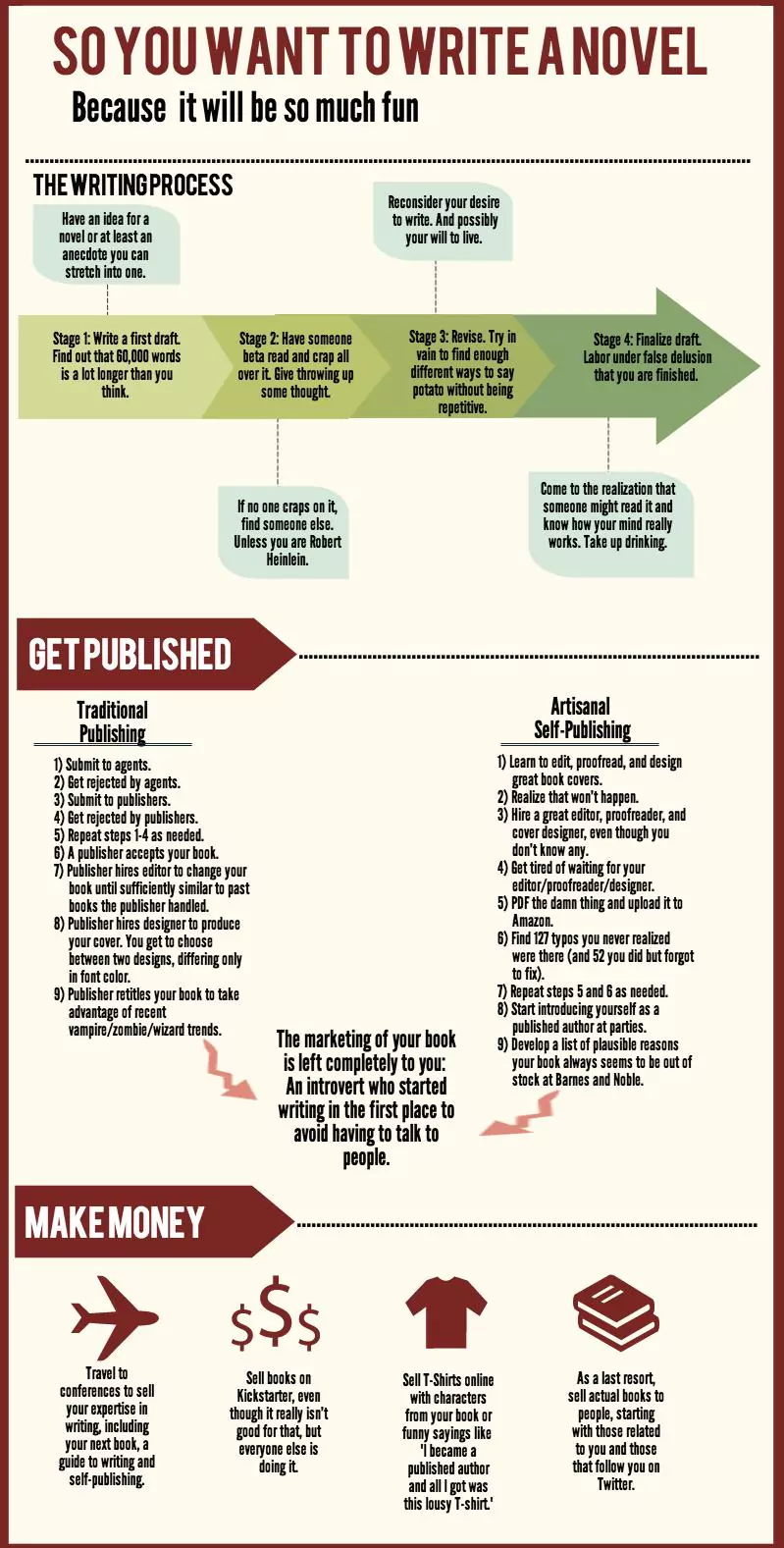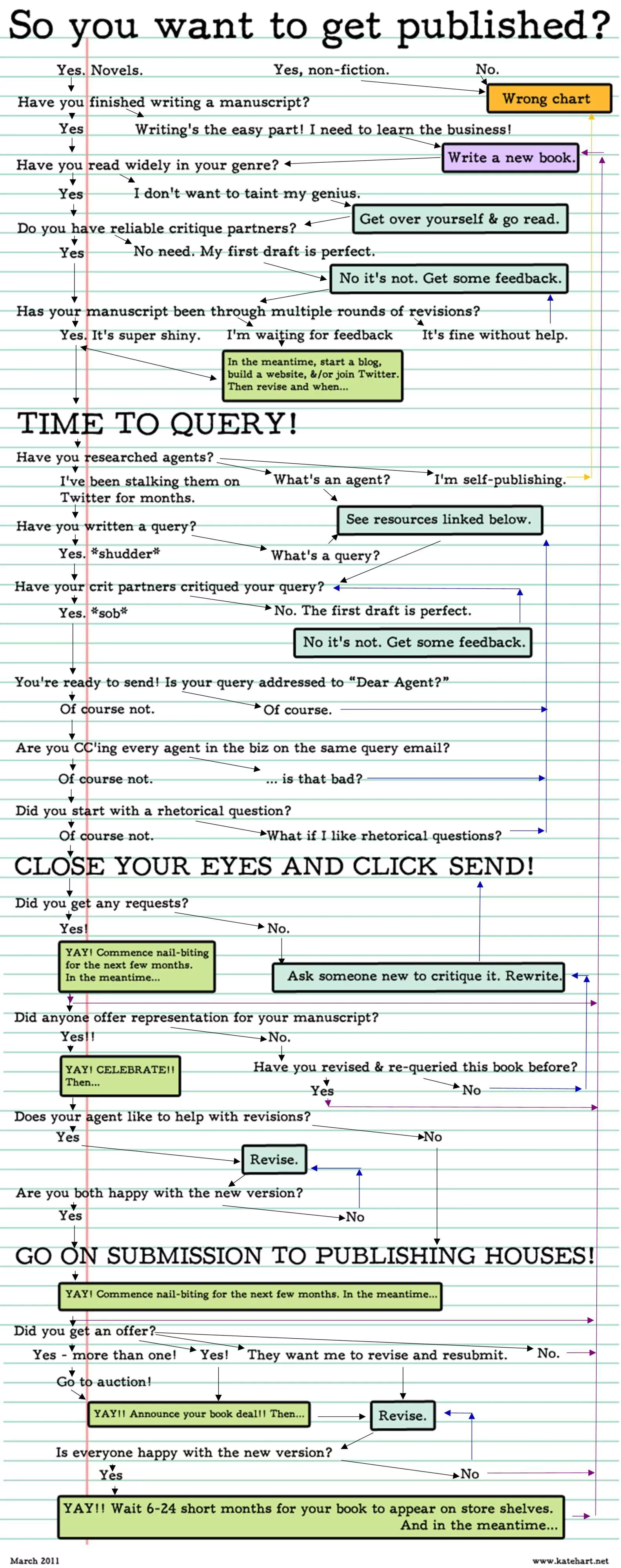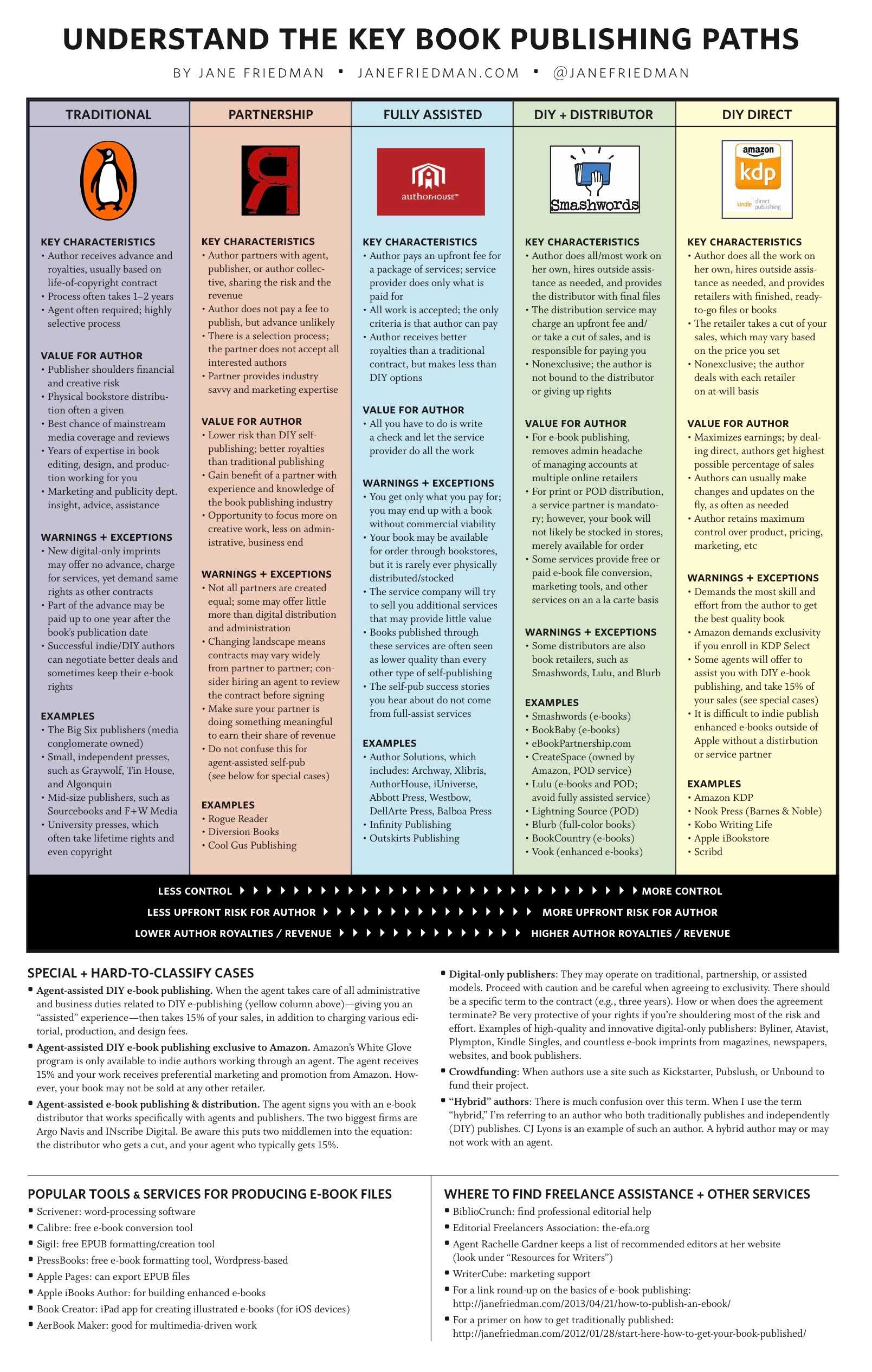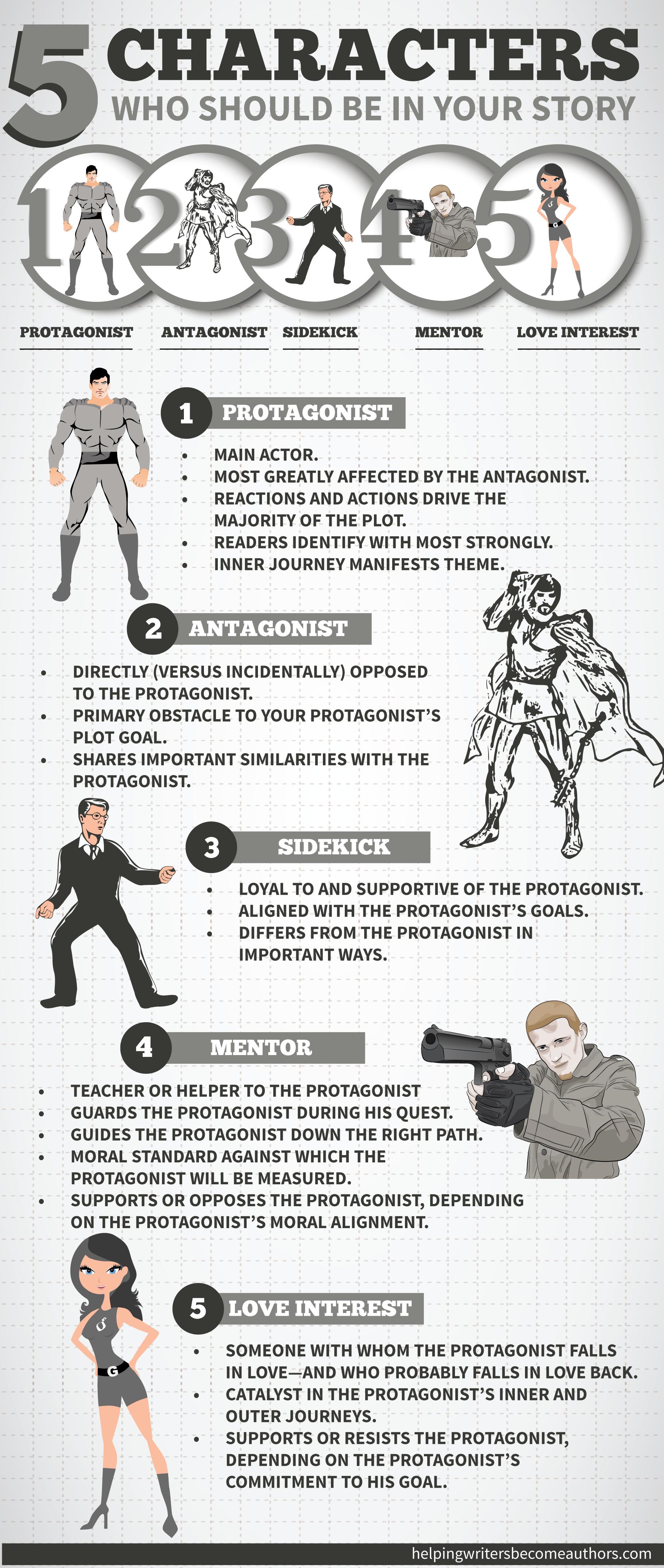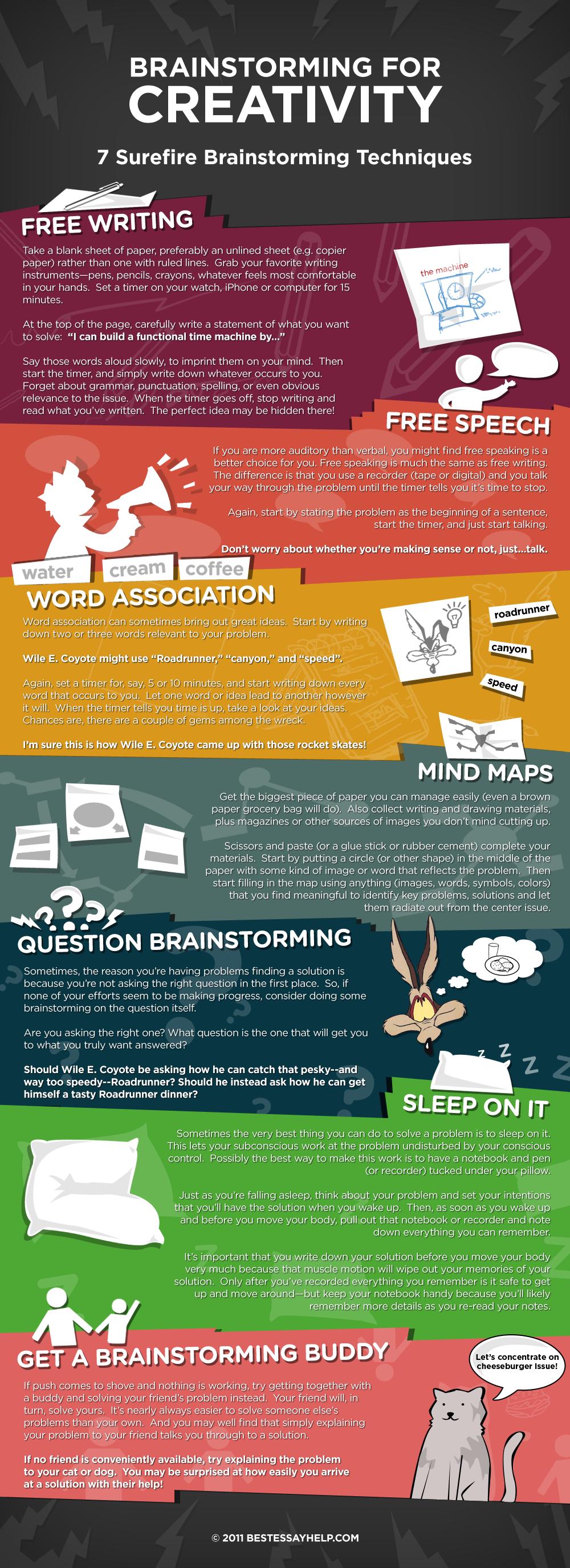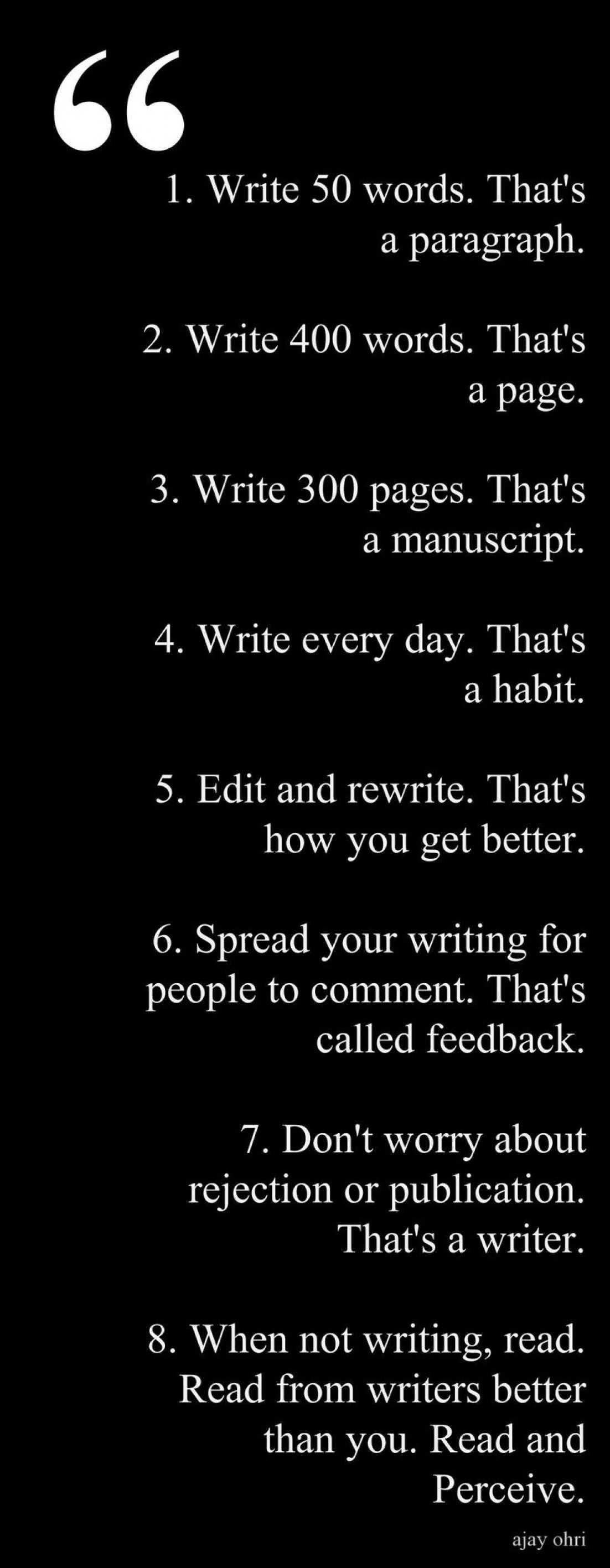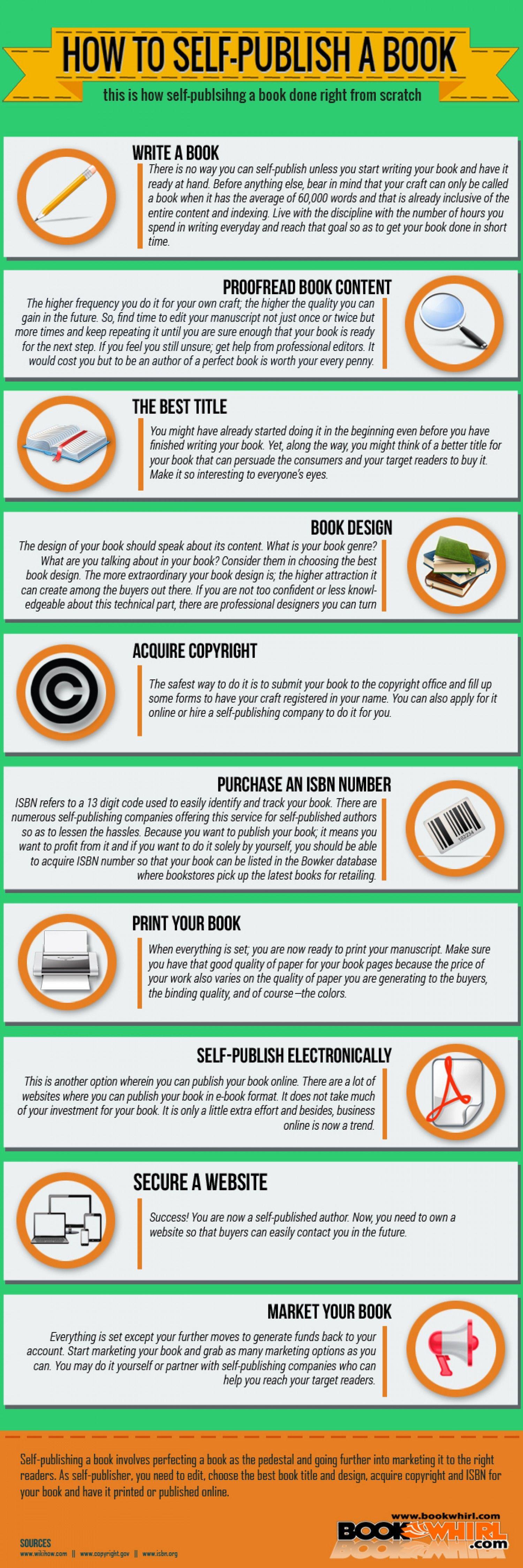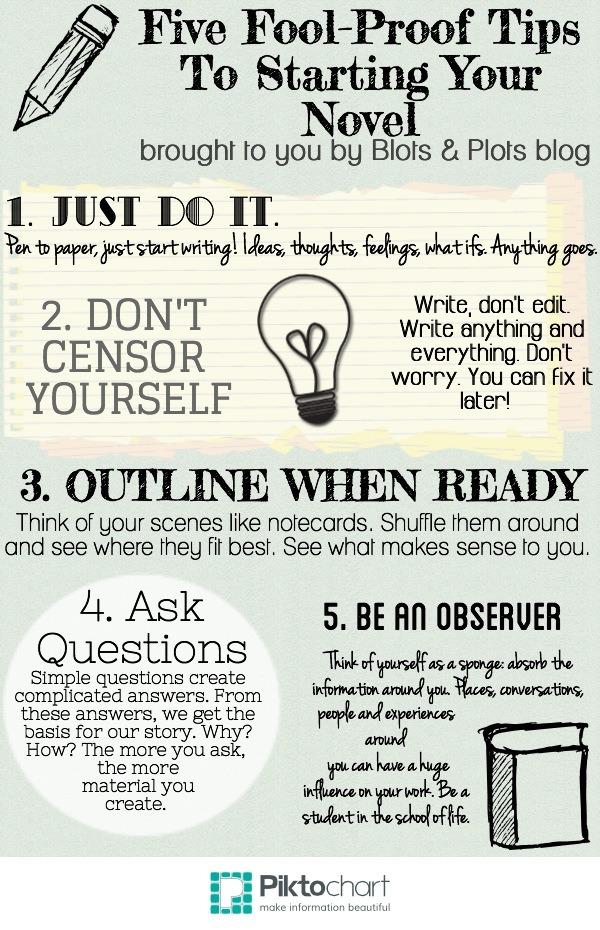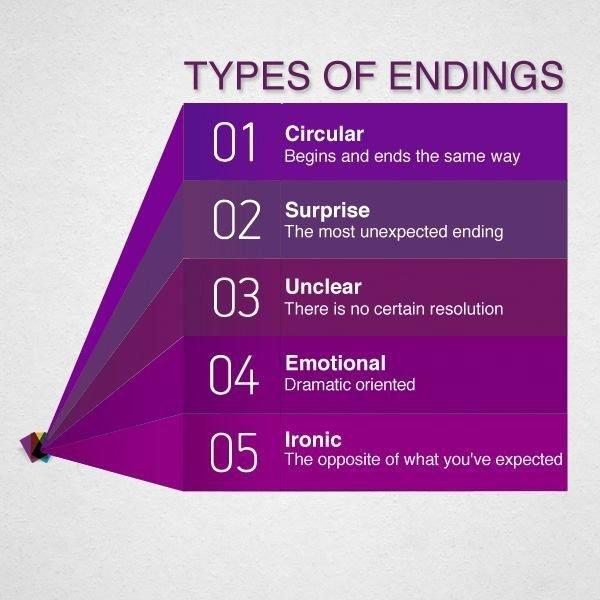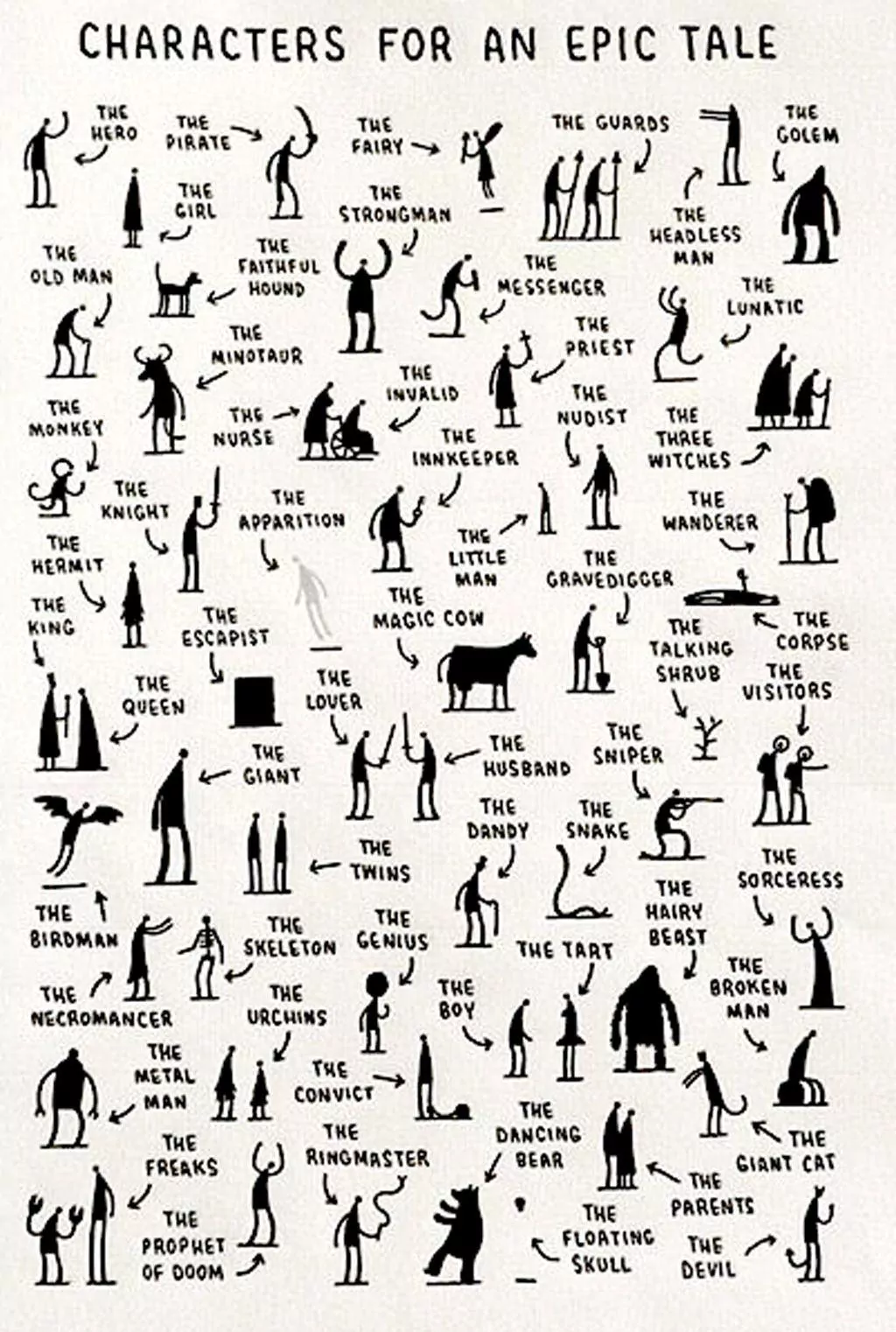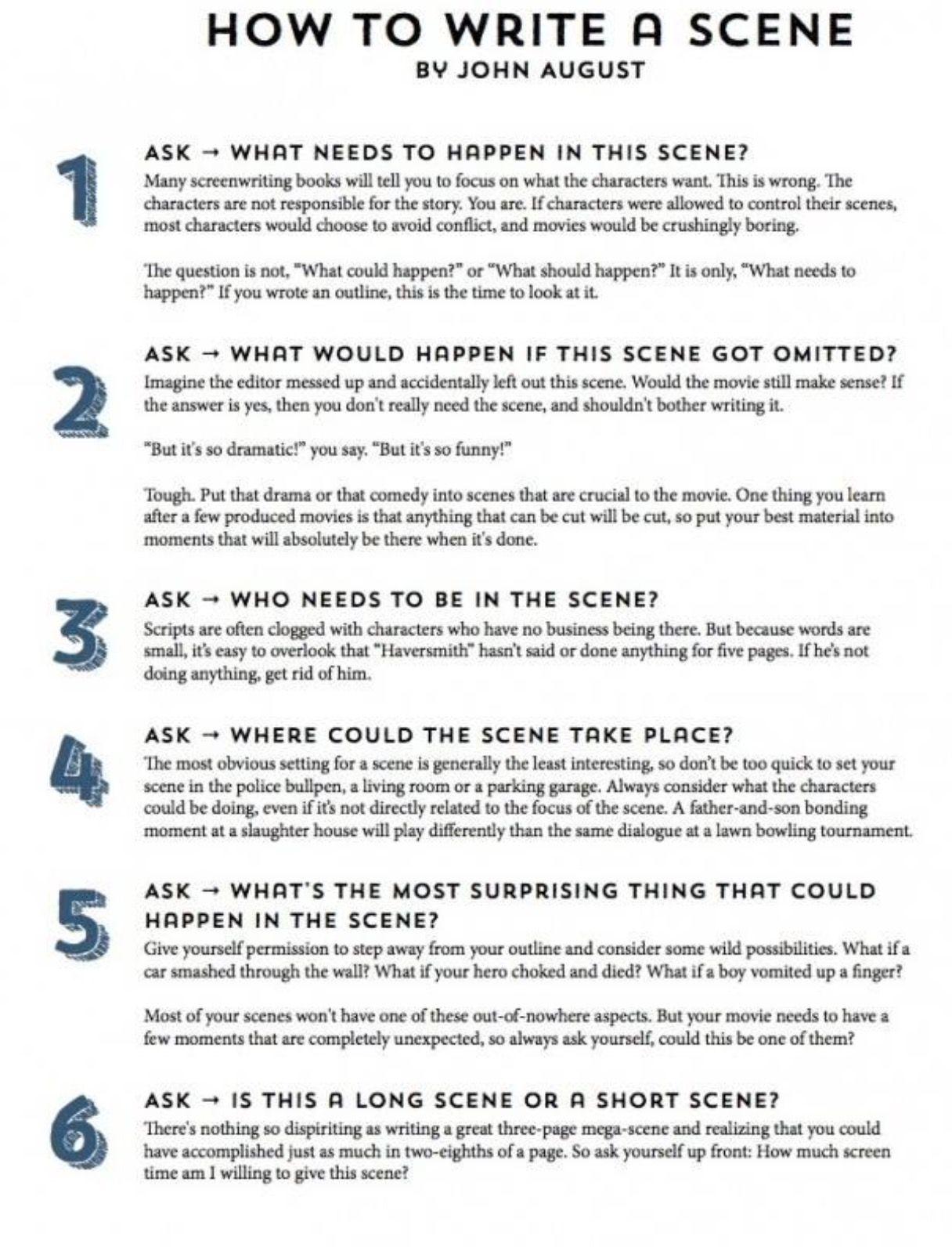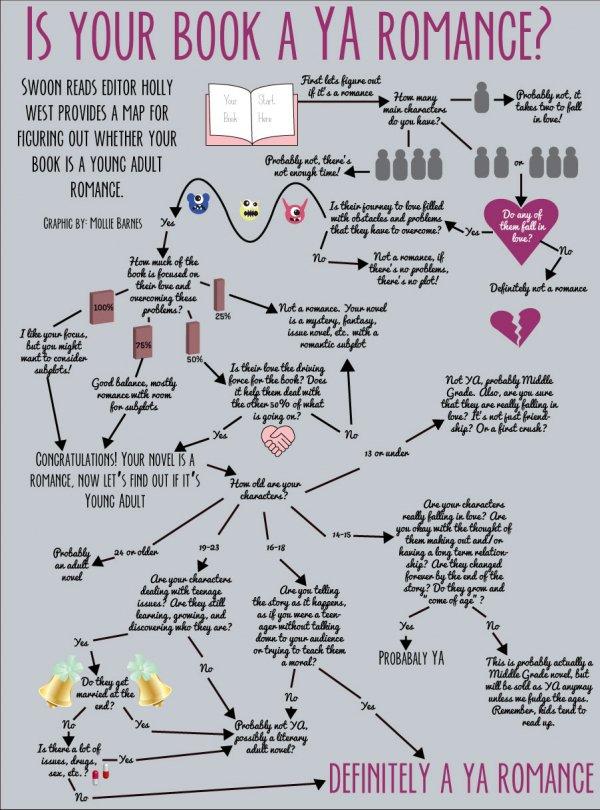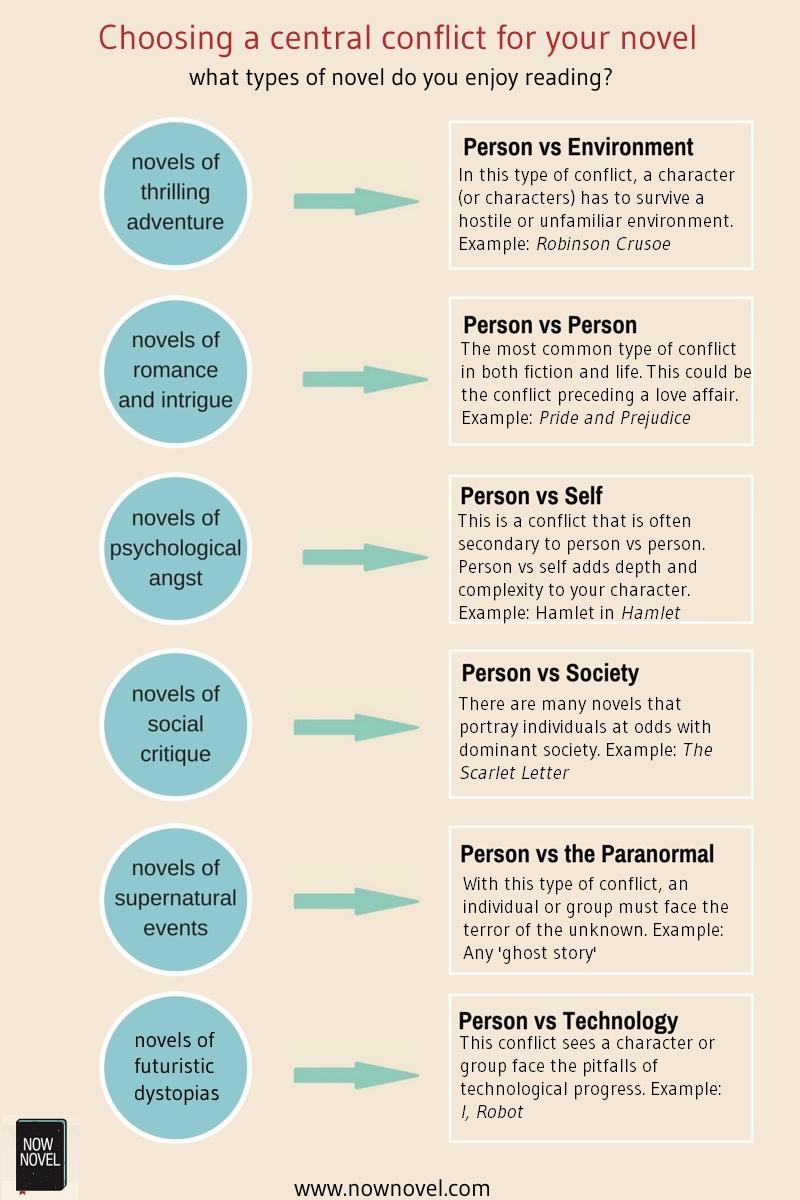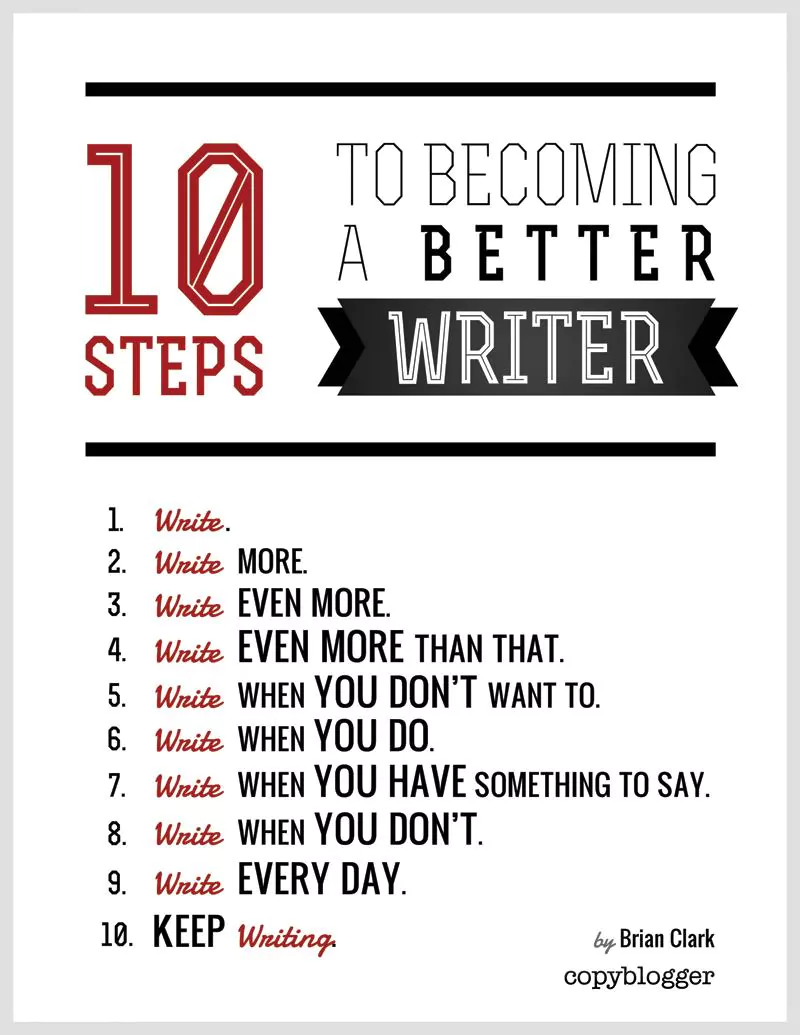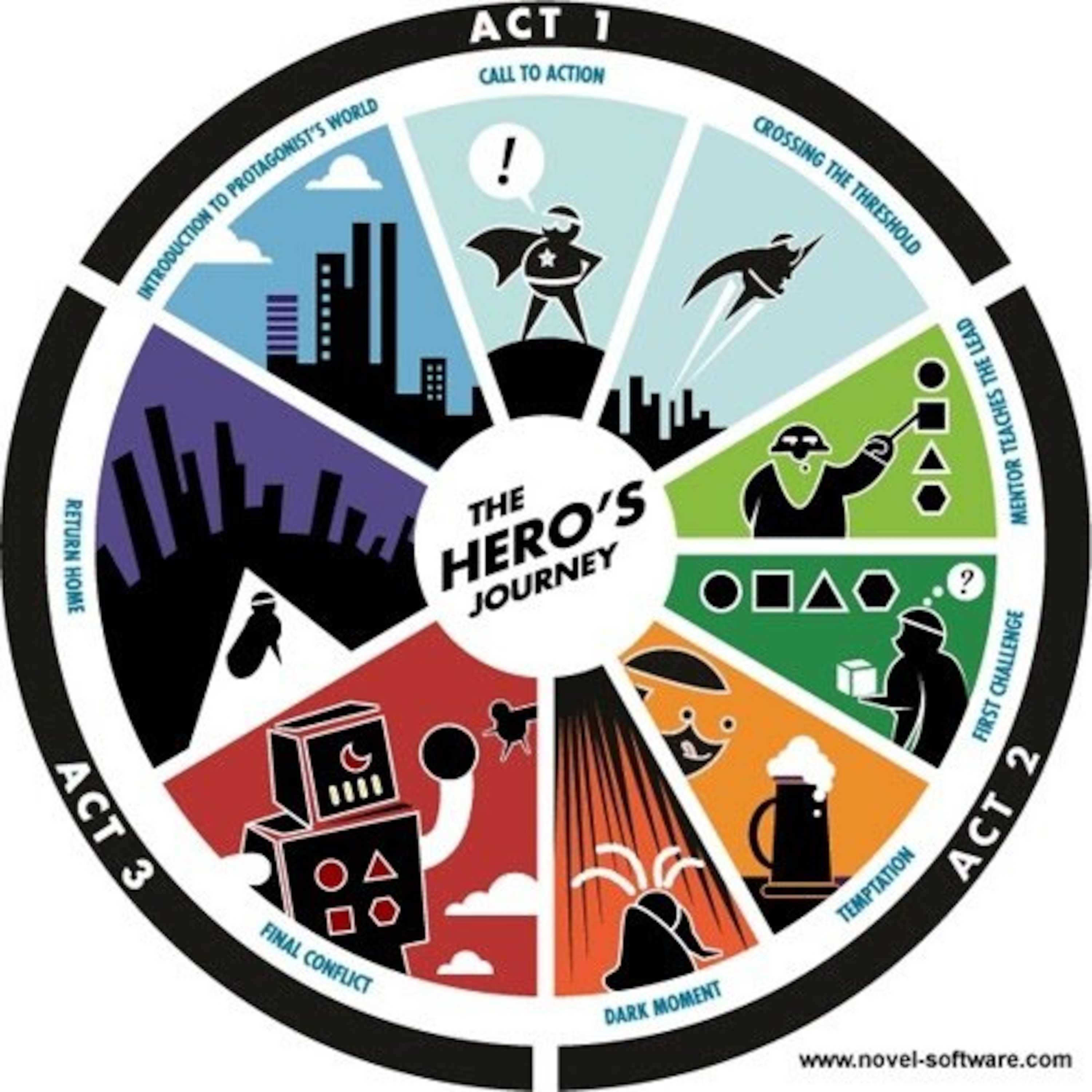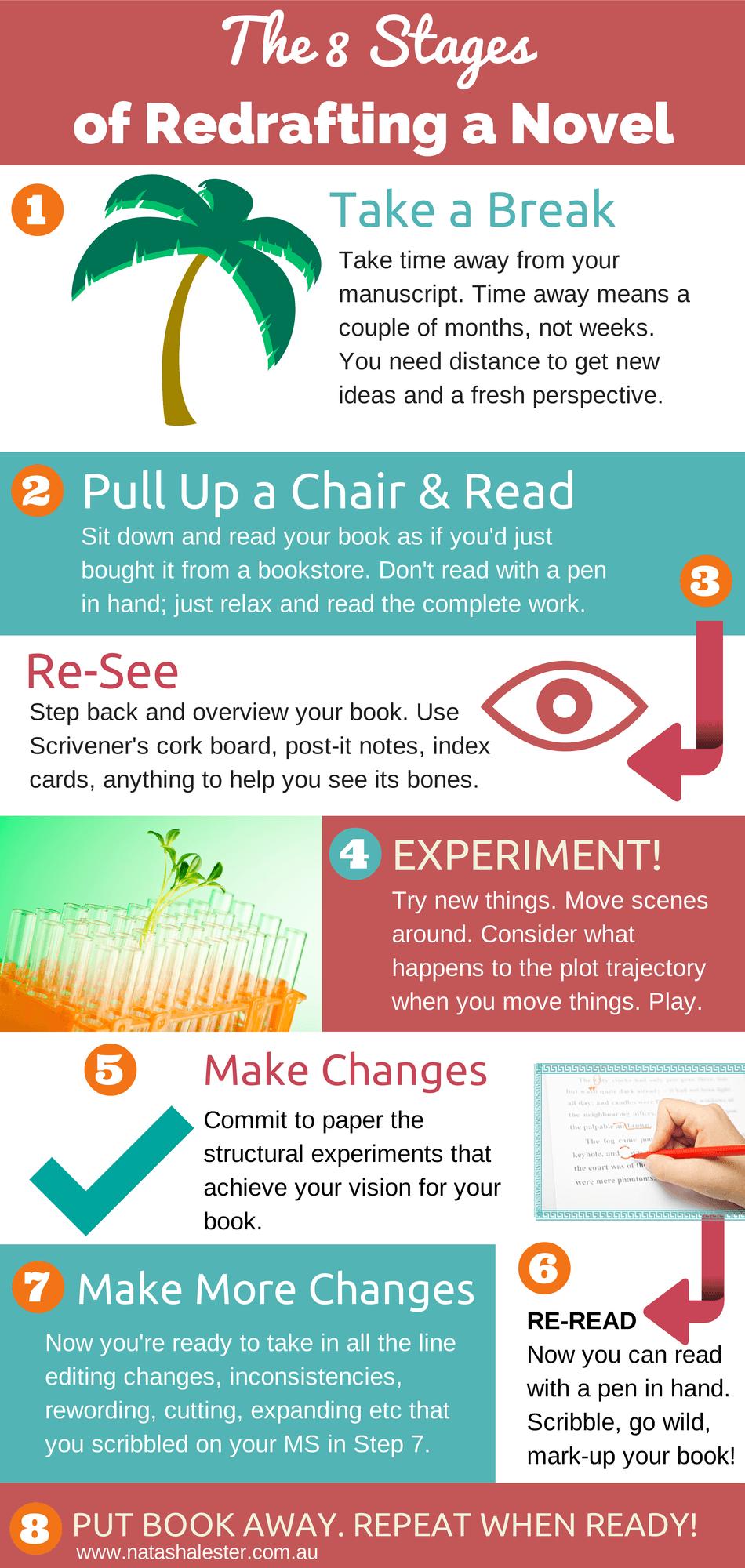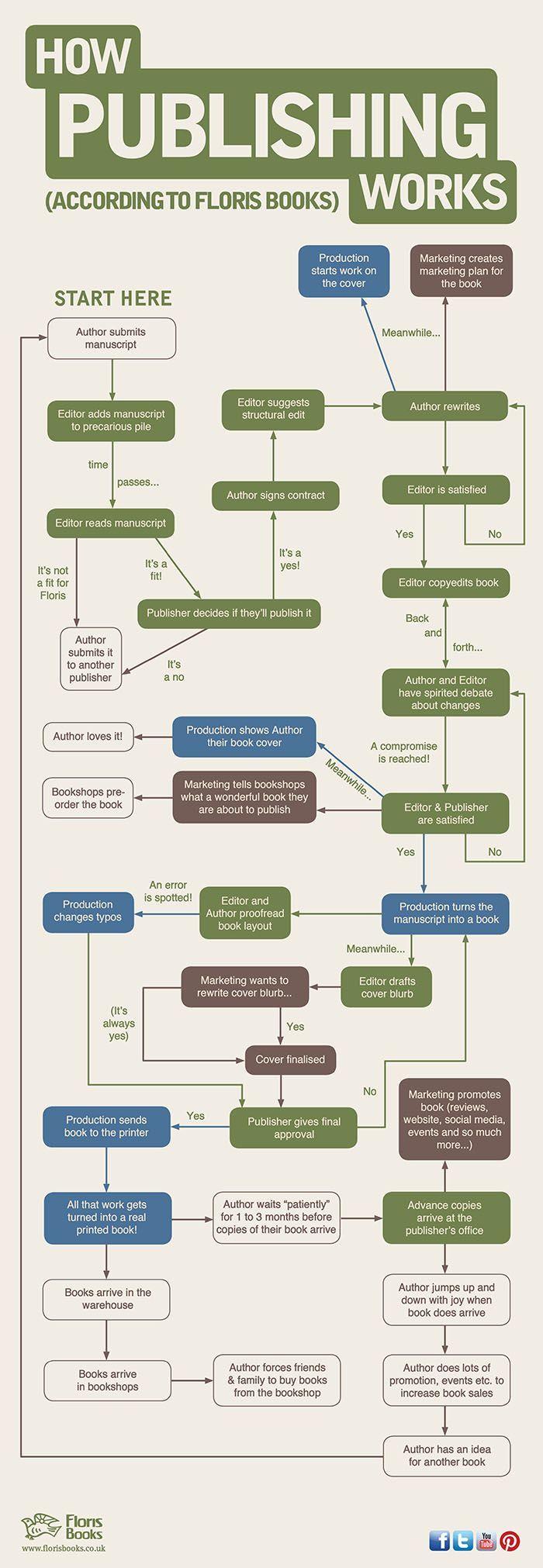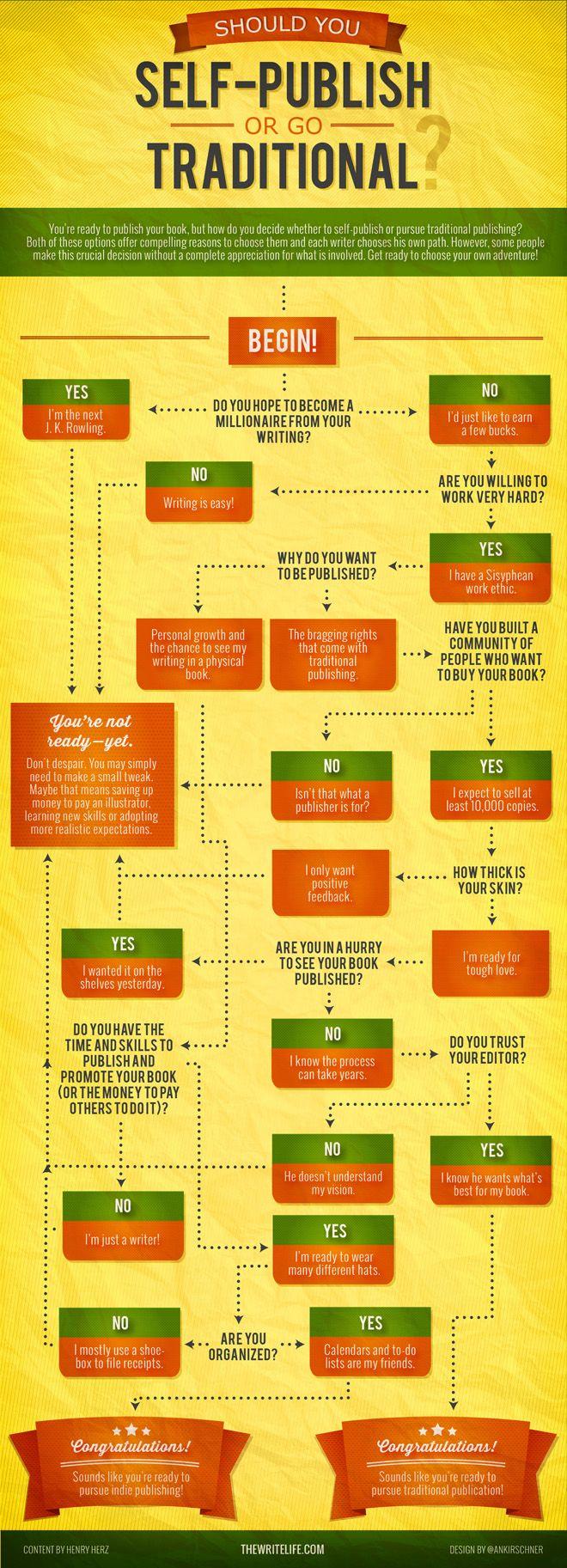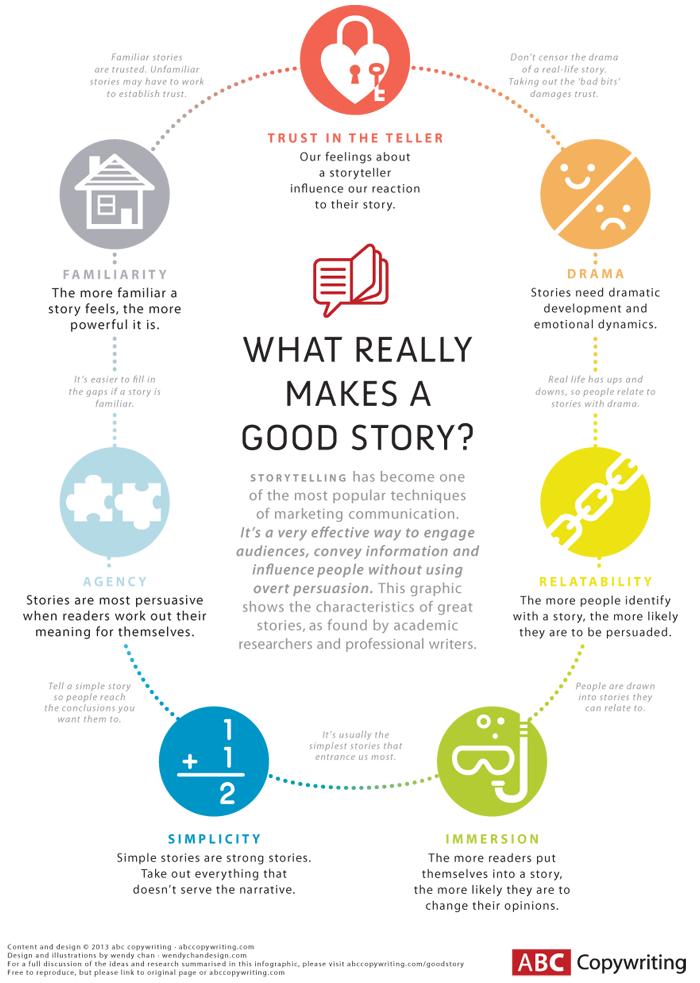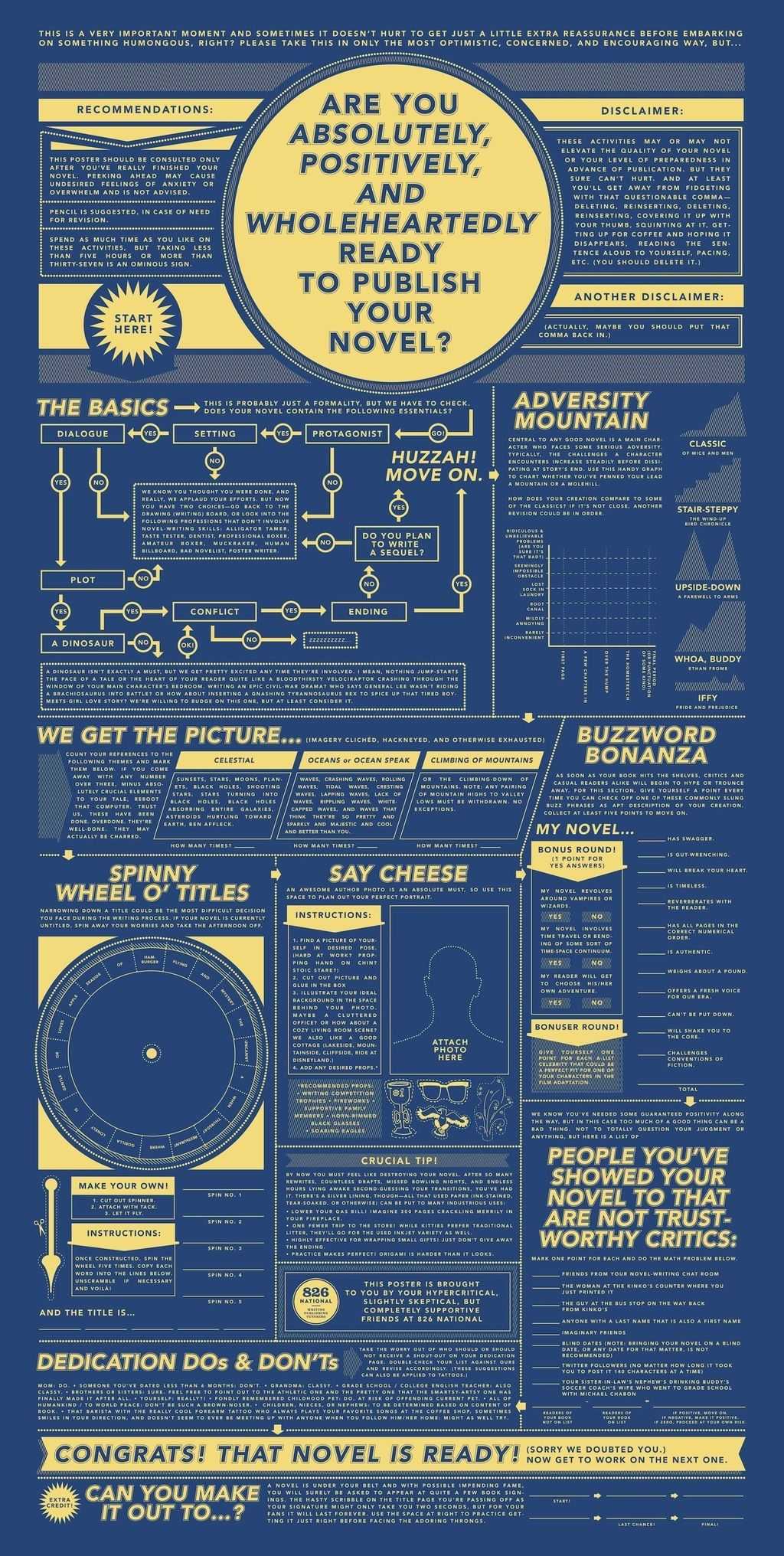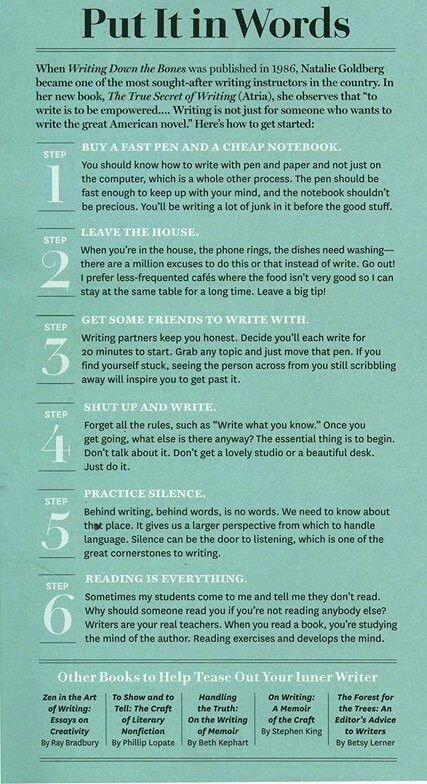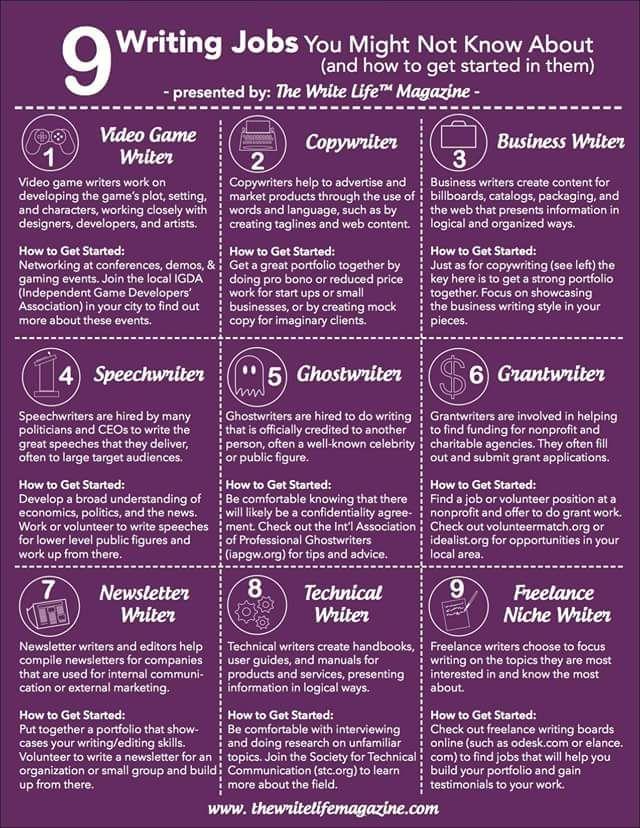So you want to be a writer! Regardless of whether you’ve just begun writing or whether it’s a dream you want to pursue, there’s plenty of help coming your way right now with these wonderful infographics for writers.
1. The Writer’s Guide To Success
If you’re an aspiring writer looking for advice on how to become a better writer, you’ve come to the right place. But first, you need to figure out what kinds of writing activities you can do, as well as learn the best writing tips.
Do you want to be a writer but aren’t sure if you can make a living at it? Let’s figure out if you can do money writing and what you need to become a writer.
If you write engagingly and have a gift for captivating readers, you may be able to make a living as a writer. Here we look at some of the best writing tips you can use to improve your skills.
2. 12 Character Archetypes
Imagination alone is not enough to create a compelling and understandable character. Instead, writers use globally recognizable images, or archetypes, to make a character beloved by the audience. Although the characters are deep and exciting in this way, in the famous Marvel universe, there are vivid examples of how good a solution can be to use archetypes in their pure form.
The archetype defines the character. You can imagine a rough image of the character by the name alone and a brief characterization of the archetype. It is important here that when the viewer intuitively understands a character, it automatically becomes close to him.
Let’s understand the system of the twelve archetypes and how writers use them.
3. The Writer’s Rule Book
Most writers have their own particular “rules of writing”. Nevertheless, much can be learned from reading about other approaches to writing.
Like language, the rules of writing change as we go through different times of human progress and technology. Some believe that writing should be done in a certain way. Others view writing as a blank canvas and view a book as one giant work of art.
The infographic below attempts to streamline the author’s rules to help you in the future.
4. So You Want To Write A Novel
The art of novel writing can seem mysterious. But there are two basic principles at the heart of writing fiction – creativity and discipline. First, if you dedicate yourself to this process, the results can be fruitful.
Knowing the basic principles of novel writing is necessary for every writer to complete a work of fiction successfully. Whether you are an aspiring writer or already an author of a famous work, you have a lot of hard work ahead of you.
Fortunately, if you remember these tips, you can maintain your style and point of view while applying discipline.
5. How To Get Published
The last decade has brought many changes and upheavals to the publishing industry. With the advent of desktop publishing, the rise of e-books has accelerated change.
Not so long ago, there was only one way to get published, to find an agent. This description of traditional publishing is still a possible way for authors today. Now, however, there are three other different paths an author can take.
The infographic below illustrates how to get published. Thus, there is not one path that is always right for everyone. Instead, deciding based on long-term career goals and preferences would be best.
6. The Key Book Publishing Paths
Lots of writers are confused about their publishing options. The infographic below outlines the most crucial publishing avenues for writers, potential pitfalls, and some examples of each.
The chart depicts the differences between traditional and self-publishing. It’s excellent advice for any aspiring writer trying to navigate this field.
7. 5 Characters Who Should Be In Your Story
Aside from the quality description of events, the most important element in a story is the participants in those very events. Therefore, although the plot is vital and the theme is fundamental, the cast of characters is the most crucial element of your story.
Characters serve as the driving force to create and move the story forward. Thus, readers can experience the world you have created through your characters. Finally, your characters illustrate and embody the theme of your story.
Use the infographic below to explore the character and find elements you can use in your writing. This will help you refine your plot and tighten your prose.
8. How To Brainstorm For Creativity
There are many different ways to get ideas for creativity. It’s helpful to use appropriate methods to achieve these goals better. One such, brainstorming, is a creative problem-solving method.
For the writer, brainstorming is an effective way to generate ideas. The basic idea behind brainstorming is that it is a way to quickly develop many views and then evaluate them to determine which ones are most promising.
Clearing your head of thoughts and putting them aside on paper can help you present ideas and connections more easily. At the end of the exercise, you will also have related words and ideas waiting to appear on the page.
9. The First Draft Of A Novel
The first draft, without much editing, is the very first version of what your finished work will be. The point of the first draft is to give the story more detail later.
If you feel stuck at specific points in the draft, the best way out is to write something down on a blank sheet of paper. Then, there’s always time later to revisit what you’ve created in subsequent drafts.
Keep writing until you finish the first draft. Below you will find a helpful guide for every beginning writer.
10. J.R.R. Tolkien’s Writing Tips
John Ronald Reuel Tolkien was a writer, philologist, poet, and known for classic works in fantasy like Lord of the Rings or The Hobbit. He is one of the most famous British writers of the twentieth century.
There is no fantasy writer today who has not been influenced in one way or another by Tolkien’s work. His works are also known for fascinating plots and beloved characters.
The infographic below has compiled a collection of tips from the genius John Ronald Reuel Tolkien for writers seeking inspiration and guidance.
11. How To Be A Better Writer
Writing clearly and thoughtfully is an invaluable skill for every writer. From a practical standpoint, writing is simply putting one word after another. However, in the seconds between writing each word, whole worlds of frustration are sometimes squeezed together.
Anyone can improve their writing skills with some guidance and practice. Whether you’re hoping to set yourself apart from other applicants or writing an engaging story, improving your writing skills can improve your chances of success.
If this sounds familiar to you, or you’re just trying to improve your skills, this infographic is for the hour. We’ll give you some tips to help you strengthen your writing skills.
12. How To Become A More Productive Writer
An essential question in writing is how you find the time to write the next chapter or a new part of a story if productivity is your weakness. If you hope to become a prolific writer, you need to find a time when there is no time.
If you are a writer, your number one enemy is lack of time. The good news is that a few tips on how to write productively are often beneficial and easy to apply.
Here are tips on adjusting your way of thinking and schedule to make the most of it.
13. Facts For Self-Publishers
If you’re a writer researching how to publish a book, you’re taking the right step by studying helpful infographics. Being a writer today means you have more options than ever in becoming a published author.
Thanks to modern technology, self-publishing has become a familiar term for writers worldwide. It is one of the best options for those who want complete creative control over their book.
There are advantages and disadvantages to self-publishing. Let’s delve deeper into some surprising facts you may not have known about self-publishing.
14. The Literary Genres
Literary genres are usually defined by technique, length, tone, and content. More broadly, they can be more abstract, flexible, and vague. A writer needs to be able to identify genre patterns and know their key characteristics.
So, literary genres are classified into categories of different pieces of literature. In other words, we are talking about large groups that include all literary works.
Explore the infographic below to learn more about examples of different literary genres and actively use them.
15. How To Kill A Character
If you’re a writer, you know the feeling when you build up a story and get to the moments you want the reader to feel. That’s when you realize it’s time for one of your characters to sing his swan song. So what’s the right way to kill the character in your story?
There are many ways to ruin a death scene and fewer quality plot twists. However, here are some great examples of well-written death scenes.
The question is how to do it well. If you’re ready to step outside your comfort zone, check out the infographic to get inspiration for your next story.
16. How To Self Publish
Self-publishing is on the rise today due to the unconditional prosperity of the book industry. So if you’re trying to leave your mark on the literary world, self-publishing is the best option.
Check out the infographic below if you want to learn more about how to self-publish your book. In addition, you’ll find helpful information on the steps you need to take to publish your first book.
17. Starting Your Novel
Do you want to write a novel and still can’t get it together? It happens pretty often. Writing books is easy, but it’s hard to write good books.
There are thousands of ways to write a novel. The one that suits you personally and will be the best.
Below is a chart that works and hopefully will help you start a novel.
18. Endings
The ending is just as important an element of the structure as the beginning and the main body. It is often what determines not only the success of the book but also the reader’s desire to turn to the writer’s other works.
The perfect ending, when the reader gets what they hoped for, makes them feel satisfied with what they have read. The reader must understand the logic of the ending to see the reasons, the reasons for the happy or unhappy ending.
The types of endings and techniques must be used with caution. Instead, study infographic below, and create a masterpiece.
19. Characters For An Epic Tale
The foundation of a great epic tale is memorable characters. This offers unforgettable characters like the hermit, the dancing bear, and others.
The infographic below pushes character development in the right epic direction. It’s a great helper for coming up with compelling stories.
20. Stephen King On Writing…
Do you dream of being an outstanding writer? Stephen King shares valuable insights on how to learn to write better. He created about 50 masterpieces that gave him millions of fans.
If you dream of becoming a great writer, we’ve selected 13 tips from Stephen King that we hope will help you improve your skills. As one of today’s most famous writers of the horror genre, he knows exactly how to write an exciting and compelling book.
Here are 13 tips from Stephen King’s Book on how to be a good writer.
21. 11-Step Guide To Writing A Scene
Fiction is made up of scenes. So if you can write a great scene, you can write a great book.
Most writers fail to create compelling scenes because they start them too early and continue too late. Don’t try to explain, and don’t try to show consequences or character reactions. Instead, stop that scene and start again when you have something exciting in the future.
The infographic below will help you write a compelling scene and give you a better idea of how to captivate the reader afterward.
22. Is Your Book A Young Adult Romance?
Young adult novels are discussed in the literary community and nominated for awards. This is because such books touch on the most daring topics with as much honesty as possible.
Novels for young adults are fun to read. Often based on a recognizable social agenda, complex issues arise before the hero, allowing you to safely live through different situations and find your attitude to them.
You can learn more about popular young adult novels here and try your hand at a new direction afterward.
23. There Are Six Major Types Of Conflict You Can Use When Writing Your Novel
Conflict is a powerful and fundamental driving force of a novel. Simply put, it’s when your character longs for something but can’t have it. If our protagonist is doing well, telling the story is not at all interesting.
The novel generally tells how the heroes and villains try to achieve their goals by overcoming various obstacles and fighting among themselves. The main rule is that each hero must have interests that conflict with those of the other characters.
The infographic below shows what pattern the conflicts in the novel might follow.
24. Guide To Using Pinterest For Writers
Pinterest is an effective platform for writers. However, writers need to strike a balance between actual writing and online promotion. Can Pinterest help you achieve your goals?
Figuring out how to use Pinterest for writers is crucial in increasing your productivity and effectiveness. There are tremendous opportunities for authors on this platform.
Below you’ll find a meek guide and reasons you might want to use Pinterest.
25. Be A Better Writer
Writing well is not as easy as it sounds. But it’s one of the essential skills in today’s world.
The best way to develop and improve your writing skills is through practice. In most cases, talent is overrated. You will write well not because of beautiful words but by trying to express your ideas clearly.
In other words, writing is work. So if you want to improve your writing skills, you are in the right place.
26. Beginner Novel Writers Tips
Writing a novel can sometimes seem overwhelming, yet it can be exhilarating and highly satisfying.
Above all, the habit of writing every day is more important than anything else. Advance your story a few words each day, and you’ll be surprised at what happens.
Below you’ll find some top tips on how to start writing a novel confidently and feel good about yourself.
27. Foreshadowing
What is foreshadowing? As a literary term, it means creating earlier scenes to foreshadow or late plot development.
The ability to anticipate events is a valuable skill for creating well-structured writing.
Below we take a look at foreshadowing, which can be helpful for you. In addition, this infographic has compiled a few rules for anticipating events like a pro.
28. How To Write Ebooks That Sell
How do you effectively sell your e-book? At first, this can be an overwhelming task. You need to write the content, design and format it into a professional-looking document.
Let’s understand exactly what an eBook is in the marketing industry. And also answer the question, why do they bring such great results to marketers?
We understand how much information there is about how to publish an e-book. How to position your e-book to sell in this day and age, the infographic below will tell you in an accessible way.
29. Rules To Phenomenal Storytelling
It can be complicated to determine what makes a story “phenomenal.” What makes one story bad while another exceptional?
Storytelling is an important skill, whether you’re a professional writer or not. The Pixar team has mastered the art of storytelling and captivated the world.
Pixar’s Rules of phenomenal storytelling have become an excellent guide to the approaches we should all use in the storytelling process. Here’s a well-designed and helpful infographic about the rules of phenomenal storytelling.
30. The 8 Steps To Redrafting And Rewriting A Book
Mastering the art of rewriting is necessary for professional writers and beginners alike. It will help identify plot holes, spelling, and other errors in the current draft.
In any writing process, writing a novel is only half the battle. The next thing to do is to complete such terrifying tasks as revising and editing.
The editing process is different for everyone, but there are a few rewriting tips that will help you in the future.
31. How Publishing Works
A writer needs to understand how publishing works to assess success chances. Traditional book publishing is when a publisher offers an author a contract, prints, publishes and sells your book.
The function of publishing is to produce the book, place it on store shelves, and notify the target audience that the product exists. Essentially, the publisher buys the right to publish your book and pays you royalties from sales.
The infographic below perfectly illustrates how publishing works.
32. How To Write A Plot Outline
What is a story in general terms? It’s a series of events, or a sequence of scenes, arranged according to specific rules in a work of fiction. In other words, it is the foundation of any creative work.
To hook the reader, authors need to give the ideas a form that will arouse the audience’s interest. So how do you come up with a story idea that the audience is sure to like?
You need to know the basic principles and rules of a good story. So, we want to help you figure out how to come up with a groovy story idea.
33. How To Tell The A Story
Storytelling is a powerful tool. The power of storytelling moves us and evokes a more profound sense of connection. If you’re just starting to write, it’s crucial to understand how to strengthen your stories and engage your audience.
Developing your storytelling skills takes practice as a writer, but there are tried and true methods of perfecting your craft. We’re here to help you create the perfect story.
34. Self-Publishing Or Traditional Publishing: Which Should You Choose?
This is one of the most common questions, and the answer to this question can be very complicated. This is because so many different factors can come into play, and the answers are not always clear-cut.
One critical difference between self-publishing and traditional publishing is that if the author owns the rights, the book is self-published. On the other hand, the book is traditionally published if a publishing company owns the rights.
Today, self-publishing is becoming an increasingly preferred option for writers. Here’s a look at the pros and cons of both self-publishing and traditional publishing with the infographic below.
35. 10 Ways To Defeat Obscurity: Tips For Authors Who Want To Get Noticed
Newcomers to the literary world today find it very difficult to get noticed. This is because millions of books are published each year, and it will take some effort to become popular among them. However, having quality content means many readers are already on their way.
The good news is that there are many ways to get your writing noticed. Below you will find tips on becoming noticed as a new author.
36. What Really Makes A Good Story?
What makes a good story? According to the audience, a good story tells about something exciting or important. Understanding the critical elements of a great story will help you write a more successful book.
Readers feel satisfied when stories move us and inspire us to think. A good story often does both.
So how do you make a good story so that it’s more successful? Let’s figure it out together.
37. Are You Absolutely, Positively, and Wholeheartedly Ready To Publish Your Novel
Any writer approaching the completion of the writing process is familiar with the unsettling prospect of sending his new work out into the world. Thus, it is straightforward to sink into the process of endlessly putting off publication as you continue fiddling with your manuscript, changing every word.
Of course, you can take a break. Then, you’ll come back to this book with fresh eyes and new skills. Your work will improve, and you’ll feel relieved that you didn’t get published too soon.
The infographic below has compiled a few things you can do to prove that you are ready to publish your novel.
38. 5 Tips For Better Copywriting
How to write better? This question haunts both the beginner and the experienced writer. A wise copywriter knows that it is essential to feel your progress in development.
For texts to be effective and professional, authors use a few tricks. These tips do not require a preference for grammar or a colossal vocabulary.
Why not apply proven methods to improve the quality of your texts?
39. Why You Should Publish An Ebook
E-books have certain advantages over print books. First of all, they are cheap and instantaneous for readers. Also, e-book authors have lower production and distribution costs.
Some writers are so stunned at having to publish books in multiple formats that they abandon their publishing plans. Don’t let that happen to you.
It’s essential to consider the pros and cons of releasing only an e-book. The infographic below will explain how to publish and distribute your e-book.
40. How To Overcome Writer’s Block
Overcoming writer’s block can be a problem for both novice and professional writers. It’s the creative stupor in which you freeze in front of a blank sheet of paper, and inspiration seems to have completely abandoned you.
Don’t think it applies only to writers; it happens in any form of creativity. We must deal with the more important underlying issues to get them out of our way.
We want you to be able to confront writer’s block the next time you come across it. So let’s look at treating writer’s block and examining the causes of writer’s block.
41. The Clues To A Great Story
Storytelling has tremendous power. Writing a story that will survive hundreds of years takes great skill.
Geniuses do not come to their jobs as geniuses but become extraordinarily good at what they do because of their ability and willingness to work.
Below are a few suggestions that can help you win over audiences of all ages.
42. How To Start Writing
Writing can come in handy in various situations, even if you’re not going to be a world-famous author. For example, product descriptions, press releases, or even writing Facebook statuses require basic storytelling skills.
So, you’ve decided to write a book. The sense of unity of ideas and willingness to do a great thing is unforgettable. There are plenty of online picks with guides that promise quick results.
But we are more interested in quality, not speed, because all these tips usually don’t work. So let’s try to outline the work on the book step by step with the infographic below.
43. Writing Jobs
People who have mastered one of the “literary” professions will never be unemployed. Their linguistic literacy and writing skills will always allow them to find paid employment.
If you like to write, you can try your hand at particular exchanges for freelancers, where customers publish tasks on various topics and assign remuneration to them. For example, authors write texts or translations and get paid for their work.
The list of writing jobs is quite extensive. Let’s get acquainted with the most popular and in-demand.
You can learn to write better if you are not a professional writer. It will take time, persistence, and practice to become a writer. Write one paragraph or an entire page each day. Welcome constructive criticism of your work that aims to improve it.
Good writing skills will help you gain credibility. But, more importantly, learning to be a good writer can help you be more effective in your work.





